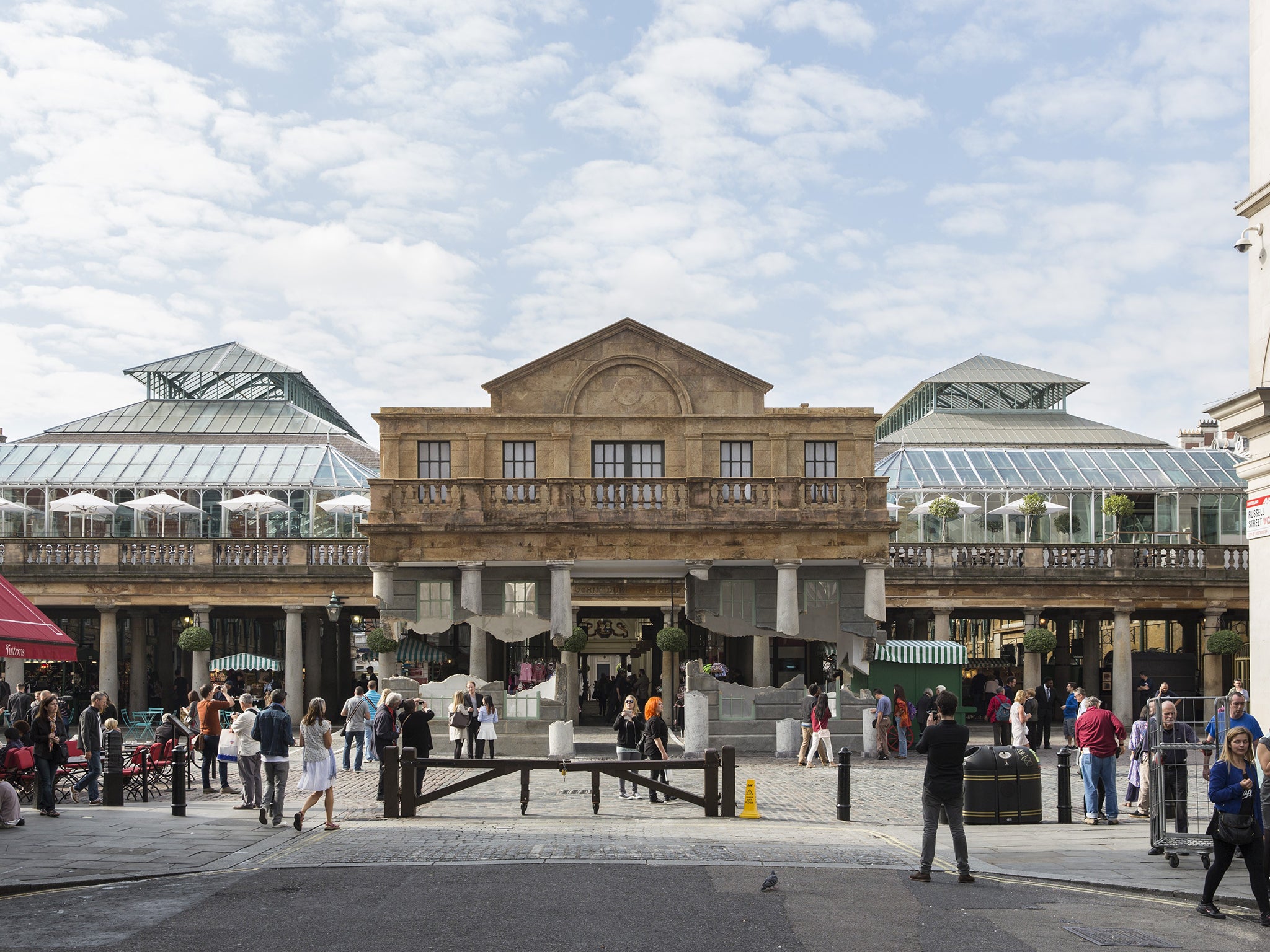Covent Garden’s sensational ‘floating house’ surrenders its secrets
A ‘trompe-l’oeil’ artwork by Alex Chinneck is the talk of central London

Your support helps us to tell the story
From reproductive rights to climate change to Big Tech, The Independent is on the ground when the story is developing. Whether it's investigating the financials of Elon Musk's pro-Trump PAC or producing our latest documentary, 'The A Word', which shines a light on the American women fighting for reproductive rights, we know how important it is to parse out the facts from the messaging.
At such a critical moment in US history, we need reporters on the ground. Your donation allows us to keep sending journalists to speak to both sides of the story.
The Independent is trusted by Americans across the entire political spectrum. And unlike many other quality news outlets, we choose not to lock Americans out of our reporting and analysis with paywalls. We believe quality journalism should be available to everyone, paid for by those who can afford it.
Your support makes all the difference.If Covent Garden’s street performers wondered why their crowds were sparse, they could have found the answer with a quick walk to the east of the piazza in London.
Large numbers of tourists had gathered open-mouthed, while office workers on their lunch breaks looked on in amazement: part of the market’s historic building appeared to have wrenched itself off its foundations and was floating in mid-air.
“How have they done that?” asked Adrianna Estruch, a hospital worker.
It was the question on the lips of the bemused onlookers who examined the cracked columns to try to work out the secret to the illusion.
Called Take My Lightning But Don’t Steal My Thunder, the installation was the brainchild of 30-year-old Alex Chinneck. Installing the sculpture in the piazza took eight months and more than 100 people, with 10 articulated lorries – and a police escort – to bring in the tonnes of steel needed to keep it upright.
Chinneck set about commissioning a series of consultations, feasibility studies, engineering reports and planning applications in February and work began over the summer, largely offsite.
The team included specialists from architectural consultants and engineers to steel fabricators, set builders, scenic artists and polystyrene experts. The mechanics of how to keep a five-tonne portico in the air were left to Simon Smith, director of civil and structural engineering practice Smith and Wallwork, who has worked with Chinneck before.
Engineers were not allowed to drill into the piazza and the work could not over-stress the cobbles.
Sixteen tonnes of steel were used and the structure was “dressed” in polystyrene and resin, finished off by set designers in the Richard Nutbourne Scenic Studio to mimic Charles Fowler’s 184-year-old neo-classical buildings. The bricks were made of polystyrene, as were the doors and window frames, and cut in Surrey by construction group Cordek using a process called Five-Axis Machining. It involved a machine with robotic arms cutting 30 bricks at a time with digitally controlled heated wire. The columns look and feel like concrete.
Mr Smith revealed that the secret can be found in the ordinary-looking market stall pushed up against one side of the building, which ensures the whole thing does not topple over.
He described the structure as a “lop-sided see-saw” with a steel base running under the market and into the simple stall, which acts as a counterweight.
Welded into the market stall’s steel base are cleverly concealed columns into which the construction team fixed a steel frame that holds the top half of the building. The steel was made by Severfield-Rowen, which worked on the Shard.
Chinneck, whose work includes a house with a façade that has slipped, said he has always been fascinated by the idea of the trompe l’oeil, of tricking the eye with paint and architecture.
“I like the idea that public sculpture can complement and elevate its environment without dominating it,” he said, adding that he was influenced by the sculptor Richard Wilson.
“Art reinvents and reinvigorates the world around us,” he said. “Architecture is a fantastic subject matter because it makes up the world around us. I want to make the everyday seem extraordinary.”
In Covent Garden, Joe Worrall, an architectural student, said it was “fascinating,” adding: “There’s a good level of intrigue about how they have kept it floating. Anything like this that can draw in such a big crowd is pretty amazing.”
Join our commenting forum
Join thought-provoking conversations, follow other Independent readers and see their replies
Comments